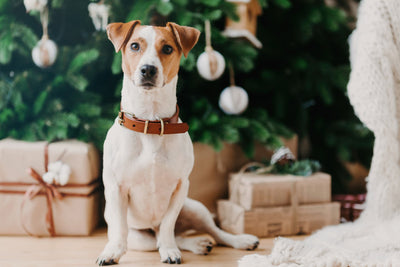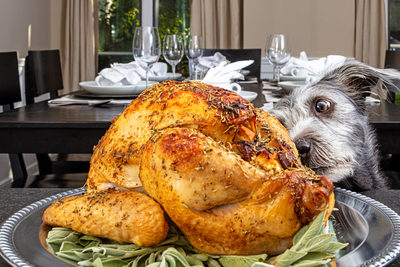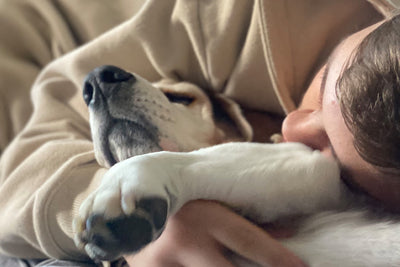Pets are wonderful creatures because they provide companionship, love, and support. They are always there for us when we need them, making great friends more than others. Dogs are the perfect pets for many people because they are loyal, loving, and protective. It's an owner's responsibility to shower them with love, and there are many ways to do this, such as taking them out for a walk.
Taking a dog for a walk is not just something to do in your free time because it's also necessary. Walks are a form of exercise for dogs, which helps them stay in shape. It's also a way for them to socialize with other dogs and people. However, not all dogs take kindly to walks, mainly because they're tied to a leash. Sometimes, they may even bite the leash for various reasons. Whatever the case, it's your responsibility to prevent this behavior, which we'll discuss in this article.
Why Does a Dog Bite a Leash?
There are several reasons why a dog might bite a leash. In some cases, the dog may feel threatened or anxious and see the leash as a source of danger. In other cases, the dog may be trying to get attention or acting out in frustration. Whatever the reason, you should understand why your dog is biting the leash and take steps to address the problem.
With that out of the way, here are some steps you can take to prevent your dog from biting its leash:
#1 - Ease Your Dog
Attaching a leash to a dog can be stressful, especially for the first time. Because your dog isn't used to it, the leash may feel constricting and uncomfortable. To make the experience more pleasant for both of you, take some time to get your dog accustomed to being on a leash. Start by simply attaching the leash and letting your dog walk around with it while you're nearby. Your dog will learn to love being on a leash with enough patience and positive reinforcement.
#2 - Engage with Your Dog before Attaching the Leash
Sometimes, a dog may not want to wear a leash because it doesn't like the sensation of being restrained. If this is the case with your dog, try engaging in fun activities together before attaching the leash, such as playing fetch or tug-of-war. This will help your dog associate the leash with positive experiences and make it more likely to cooperate when it's time to put the leash on.
#3 - Teach Your Dog to Relax When Seeing the Leash
A dog may feel distressed when seeing a leash, so you may need to work with your dog to help them relax when they see the leash. You can begin by simply showing your dog the leash and letting them sniff it. Then, put the leash on and hold it while. Once your dog is comfortable with this, try walking around with the leash on. With patience and positive reinforcement, your dog should eventually learn to relax when they see the leash.
#4 - Attach the Leash When Your Dog Is Relaxed
It may seem counterintuitive, but you can attach the leash when your dog is relaxed. If they're already anxious or hyperactive, putting on the leash will only exacerbate their feelings and make it more challenging to train them effectively. Instead, wait until they're resting or playing calmly before attaching the leash and beginning your walk.
#5 - Reward Your Dog When It Behaves While Wearing the Leash
For a dog, wearing a leash is not the most natural thing in the world. It can be uncomfortable and even a little bit scary. That's why rewarding your dog when it behaves while wearing the leash is important. A simple treat or a game of fetch can go a long way in making your dog feel more comfortable and happy while on the leash.
#6 - Get High-Quality Leashes
Generally, wearing a leash can be pretty uncomfortable for a dog because it
restricts their movement. Because of this, you want to ensure that your leash is high-quality and comfortable for your dog.
You should look for soft materials like nylon or leather leashes and avoid metal leashes as they can be pretty harsh on your dog's skin. You also want to make sure that the leash is the right size for your dog; too small, and it will be uncomfortable; too large, and it could slip off easily.
#7 - Avoid Tugging the Leash Back
You should never tug the leash back when your dog is walking in front of you. This can cause them to become frightened or confused and may even result in them pulling away from you entirely. Instead, try to keep a loose grip on the leash and encourage them to walk beside, behind, or in front of you.
For example, if you're in a park, try to keep your dog off the leash and let them explore. If they start to pull ahead, gently encourage them to walk beside or behind you. If they lag, you can encourage them to walk before you.
#8 - Use a Tug and Biting Toy
Some dogs may bite their leash because they're not stimulated enough. For this reason, using a tug or biting toy can be helpful while walking. This will give your dog something to focus on and can help keep them from getting bored. Some tug and biting toys have compartments for treats, so your dog can be incentivized to wear the leash. Be sure to use these toys when your dog is actually walking, as you don't want them to associate the toy with sitting or lying down.
#9 - Start Leash Training as Early as Possible
Wearing a leash isn't easy for a dog, especially if it rarely wears one. Because of this, it's best to start leash training early, as soon as your puppy is old enough to walk on a leash. That way, they'll get used to wearing a leash and being led around, and it won't be such a big adjustment for them later.
#10 - Be Consistent
The most important thing to remember when leash training your dog is consistency. If you're inconsistent, your dog won't know what to expect and will be confused. So, if you're going to use a specific command when you're walking your dog, use that command every single time. That way, your dog will learn what you expect from them and will be more likely to do what you want them to do.
Dogs have short attention spans, so you should keep your training sessions short. If you train your dog for too long, they'll get bored and won't retain anything you're trying to teach them. 10 to 15 minutes is enough to ensure they get the hang of it.
Conclusion
Teaching a dog to wear a leash is never easy, but you must accommodate your dog because your dog needs to wear a leash in certain situations. You can use positive reinforcement to help your dog learn to wear a leash, and eventually, your dog will be more comfortable with the process. All that matters is ensuring they're comfortable when wearing one.
If you’re looking for dog leashes, Maggie’s Pet Boutique has what you need! We offer various selections for cats and dogs, such as beds, collars, apparel, and other accessories, for affordable prices. Simply go to our website and take your pick!






